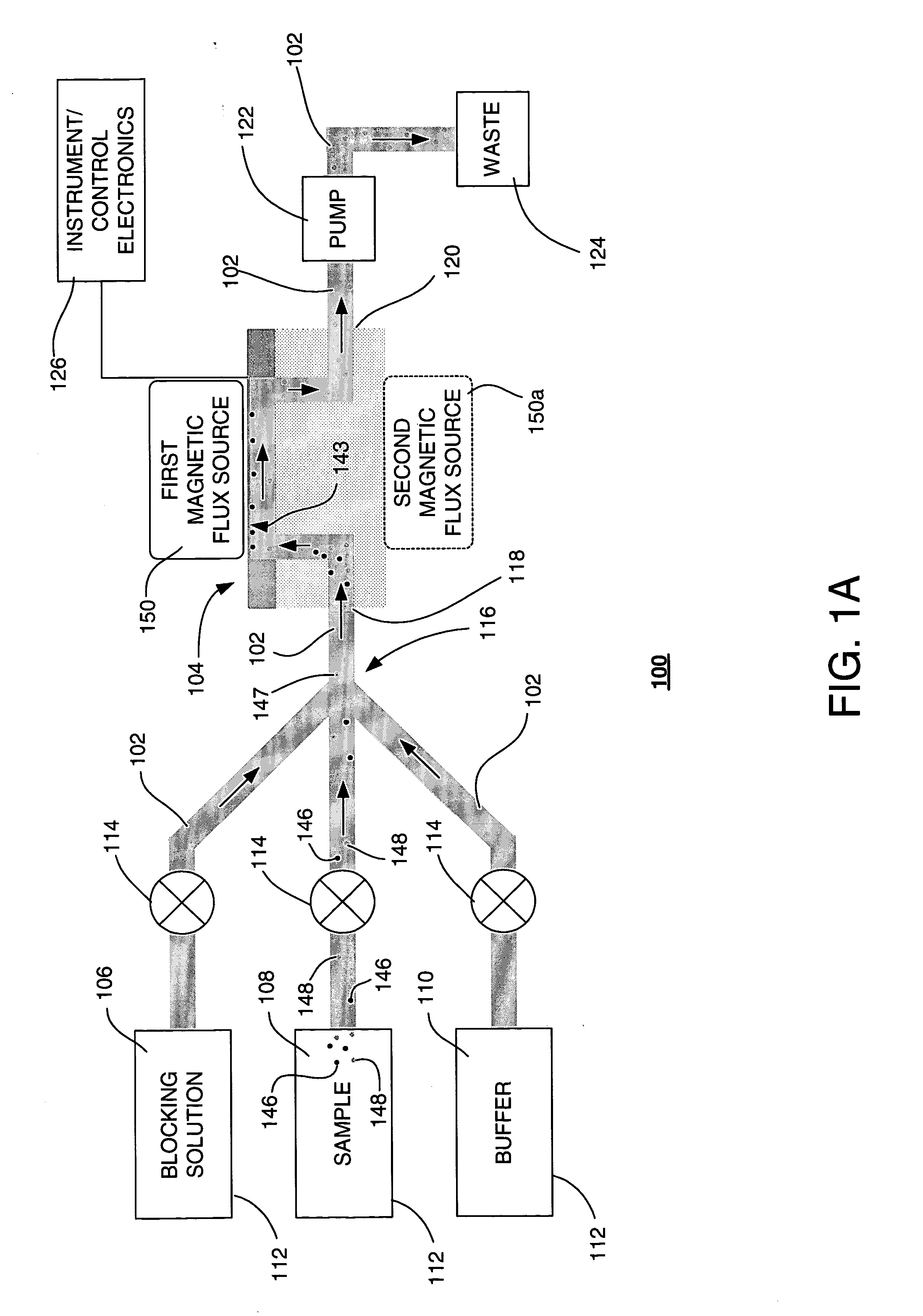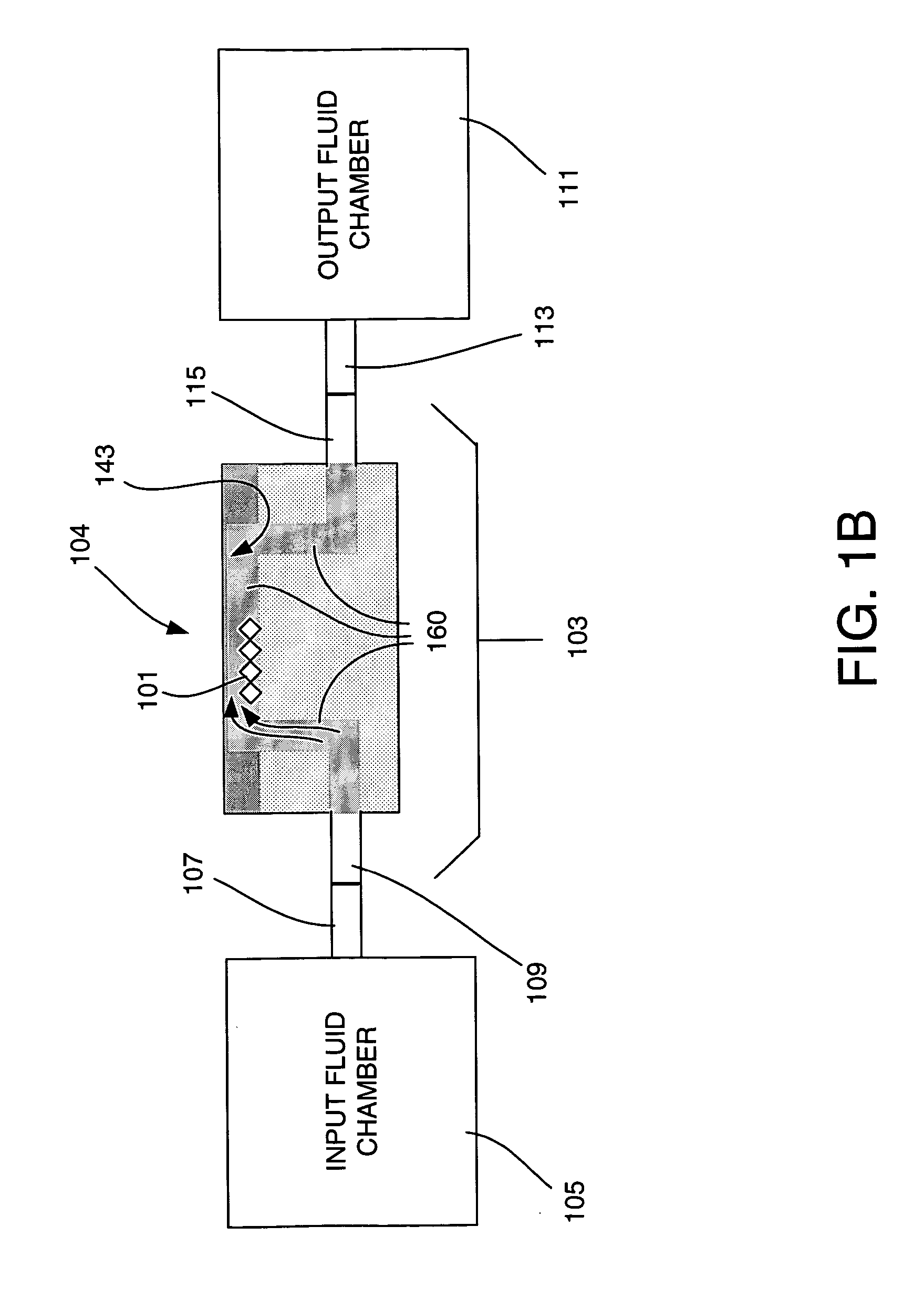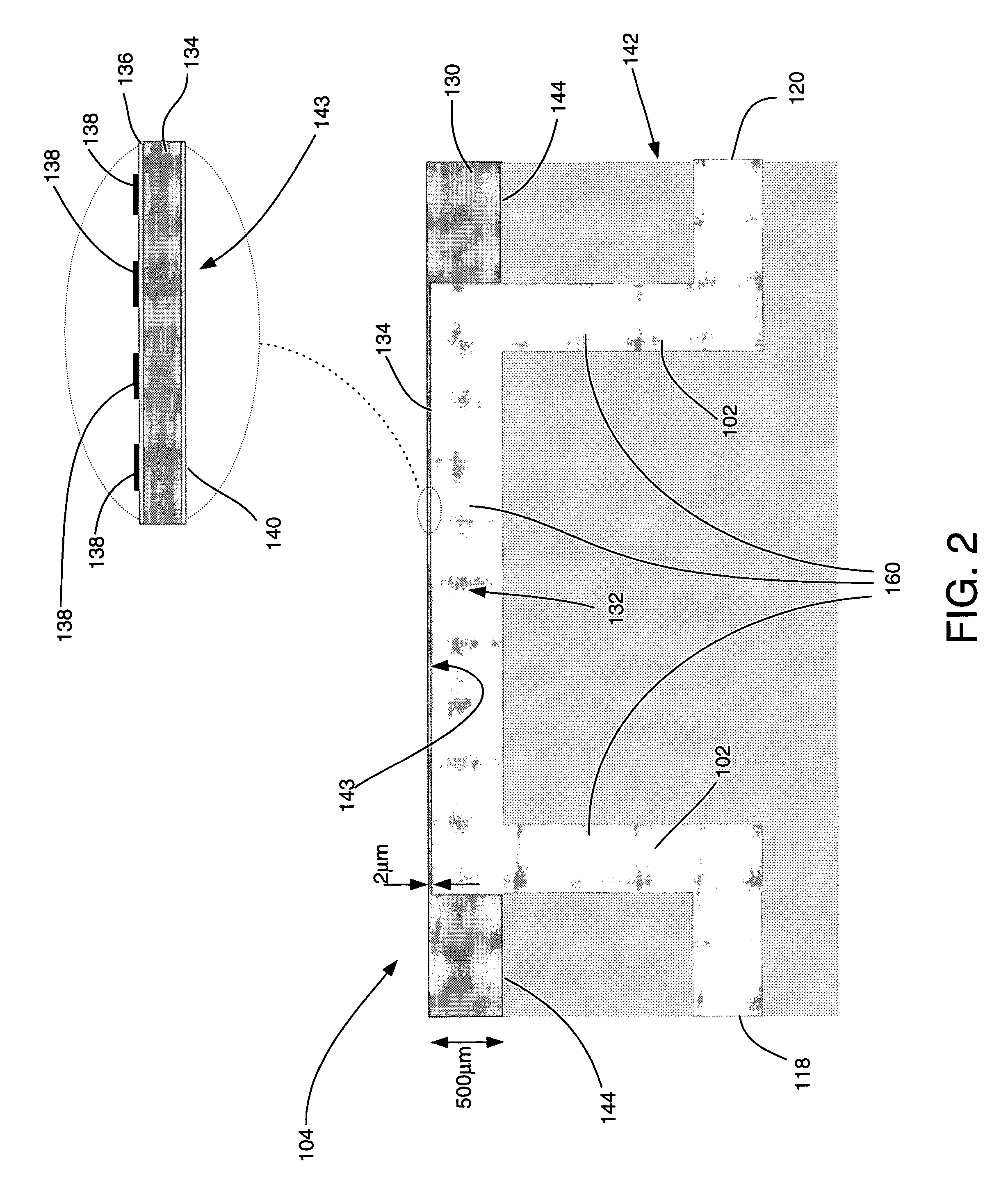Method and apparatus for detection of analyte using a flexural plate wave device and magnetic particles
a technology of flexural plate wave and magnetic particles, which is applied in the field of sensors for detecting analyte, can solve the problems of amplified fpw signal response, and achieve the effects of increasing the fractional capture rate and efficiency, reducing the amount of analyte, and increasing the magnetic field and field gradien
- Summary
- Abstract
- Description
- Claims
- Application Information
AI Technical Summary
Benefits of technology
Problems solved by technology
Method used
Image
Examples
Embodiment Construction
[0023] One embodiment of an analyte detection system 100, constructed according to the invention, is shown in FIG 1A. The system 100 includes a network of channels 102 for transporting various test solutions (also referred to herein as “test fluids” or “fluids”) through an FPW device 104. The following U.S. patents and patent applications, all of which are hereby incorporated by reference, describe examples of the various types of FPW devices suitable for use in the present invention: U.S. Pat. No. 5,129,262, U.S. Pat. No. 5,189,914, U.S. Pat. No. 6,688,158 B2, U.S. patent application Ser. No. 10 / 324,685, U.S. Pat. No. 5,668,303, U.S. Pat. No. 5,836,203, and U.S. Patent Application 20040038195.
[0024] For example, U.S. Pat. No. 5,129,262 describes an ultrasonic sensor that has a thin planar sheet of material forming a Lamb wave propagation medium. Lamb waves, also known as plate-mode waves, can propagate only through a material of finite thickness. In contrast to surface acoustic wa...
PUM
| Property | Measurement | Unit |
|---|---|---|
| thickness | aaaaa | aaaaa |
| thickness/wavelength | aaaaa | aaaaa |
| thick | aaaaa | aaaaa |
Abstract
Description
Claims
Application Information
 Login to View More
Login to View More - R&D
- Intellectual Property
- Life Sciences
- Materials
- Tech Scout
- Unparalleled Data Quality
- Higher Quality Content
- 60% Fewer Hallucinations
Browse by: Latest US Patents, China's latest patents, Technical Efficacy Thesaurus, Application Domain, Technology Topic, Popular Technical Reports.
© 2025 PatSnap. All rights reserved.Legal|Privacy policy|Modern Slavery Act Transparency Statement|Sitemap|About US| Contact US: help@patsnap.com



